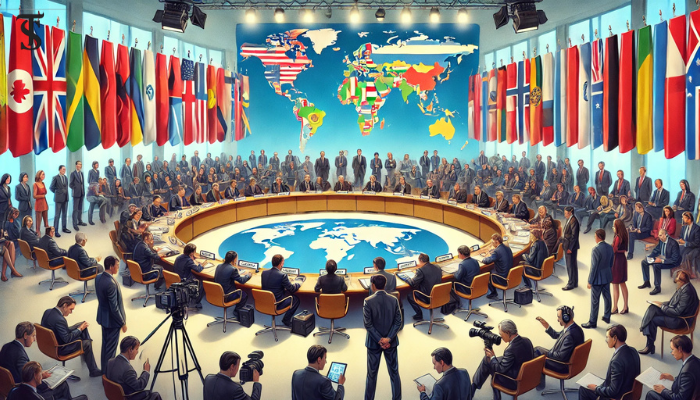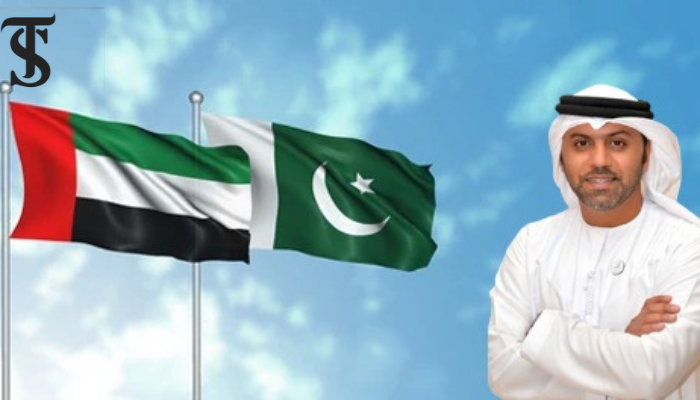From Conflict to Narrative: The Diplomatic Influence of Media

- Media’s Diplomatic Influence: Media plays a crucial role in framing international conflicts, impacting public perception and influencing diplomatic actions and alliances.
- Theoretical Foundations: Theories like Constructivism and Social Responsibility explain how cultural beliefs and ethical obligations guide media narratives beyond mere reporting.
- Promoting Peace and Stability: By focusing on shared human interests, media can advocate for peaceful resolutions, steering public opinion and international policies away from violence.
As some international conflicts see resolution while others persist, this article aims to examine the role of media in international relations and its influence on global perceptions of specific countries. Focusing on a paradigm shift in alliances and the political image, we’ll explore how states choose allies, apply international theories, and use media to craft a political atmosphere that strengthens their socioeconomic status and global standing. This approach aims to manage international reputation, avoid unwanted media attention, deflect criticism from media organizations, and reduce the risks of adverse impacts on a country’s international position and internal stability.
As we look at these shifting dynamics, we observe that many nations currently face instability or are vulnerable due to numerous factors. The article also aims to illustrate the evolving role of media in influencing global perceptions and its role in framing conflicts, both resolved and ongoing, in a way that affects public opinion and international policies.
Erik Ringmar’s “The Making of the Modern World” discusses the Treaty of Westphalia (1648), which symbolized a new organization of international politics by concluding thirty years of warfare. Ringmar states that this treaty marked a new system where states became the sole units of international relations, with sovereign rights to govern within their borders and act independently. All states were formally equal, creating an anarchic system where sovereignty coexisted without a higher power. This evolution in international politics shows how political discourse has gradually shifted, influenced less by civility and more by strategic narratives.
Another key idea in Ringmar’s work is the early concept of the “nation-state,” which evolved as states began to integrate societal identity and cultural practices into governance. Unlike traditional states, nation-states became entities built on shared identity, reflecting an era where communities solidified into political entities with a common purpose. This shift allowed nationalist leaders to argue that the nation should control the state and its institutions to reinforce its position on the international stage
To further understand this development, we turn to theories that shape the modern lens of international relations. Constructivism, for instance, posits that foreign policies are driven not solely by material gains but by cultural, historical, and societal beliefs. This perspective helps explain foreign policy behavior beyond mere economic or strategic interest
Social Responsibility Theory advocates for a free press and media but also calls for content regulation through public feedback or self-regulation. This theory posits that while the press has the right to report without restriction, it also bears an obligation to the public. Media Dependency Theory suggests that media significantly shapes public understanding of international events, especially for those beyond their local context.
Despite numerous peacekeeping missions and alliances aimed at resolving conflicts, obstacles often lead to setbacks, leaving a tragic legacy of violence. The United Nations’ efforts to maintain peace have faced limitations, with ongoing conflicts reflecting complex motivations beyond simple political aims. Blame games only worsen these crises, underscoring the need for unbiased assessments of both UN interventions and underlying political motives. The shift in international order has been particularly impactful on the Western world and has intensified conflicts. Many of these conflicts have deep-seated issues rooted in historical, economic, and geopolitical factors.
Role of Media in Framing Conflict
Since these conflicts began, media coverage has played a crucial role in presenting narratives from both sides. Media Dependency and Framing Theories highlight how media can influence public perception not only to boost viewership but also to foster awareness of these conflicts and motivate diplomatic resolution. Media’s role often transcends national allegiances, focusing instead on humanity’s shared interest in stability. These conflicts aren’t simply territorial or political disputes but involve grave humanitarian costs.
The primary role of media is not merely to report facts but to facilitate peace and stability. This aligns with Ringmar’s concept of the nation-state, which underscores the importance of shared identity in a political entity. Over the centuries, communities have shifted from cultural groups to politically unified nations, demonstrating that media has the potential to steer collective action toward peace. Constructivist theory further emphasizes that foreign policy is shaped by historical belief systems, values, and the influence of international institutions or non-state actors, who play a vital role in promoting peaceful resolutions.
Conclusion
This article has examined how international theories support the media’s influence in shaping conflict narratives. By choosing to broadcast these stories, the media may prevent escalation, drawing public concern to the actions of political leaders. As policies move from militaristic approaches to diplomatic ones, the media’s influence over those unfamiliar with these conflicts has grown, encouraging public advocacy for peaceful resolutions. Broadcasting distressing content may appear risky, but omitting these stories entirely raises moral concerns. Addressing the public in times of crisis is essential, as it prompts reflection on leadership choices, ultimately steering international relations away from violence and towards diplomatic discourse.
Hamza Zafar
The author is a freelance writer.





